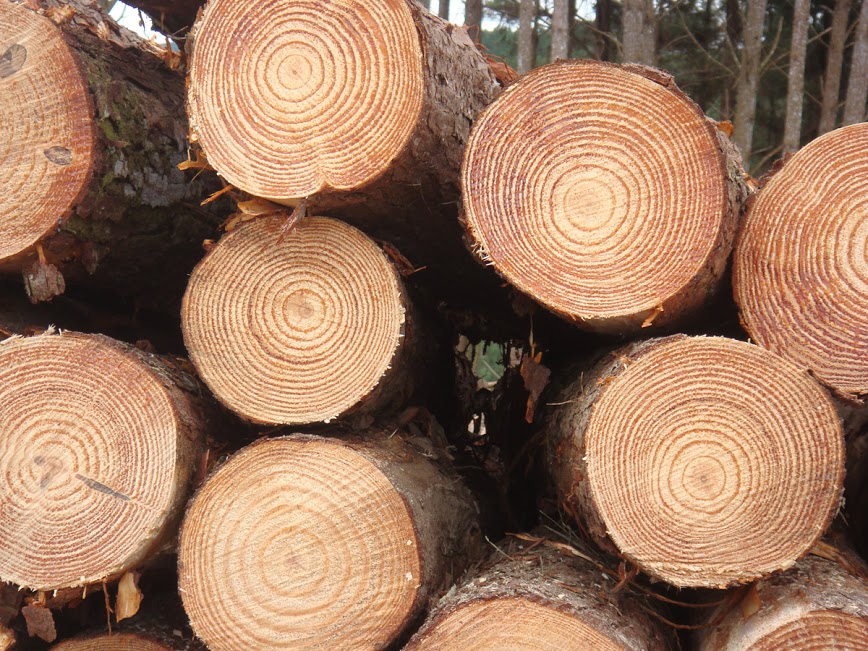New Zealand log prices saw a 14% decrease from March to April due to the lack of expected growth in China’s seasonal demand. Exporters are being held responsible for this price drop, which has made harvesting unprofitable.
In this timeframe, A-grade log prices declined from $130-$133 NZD to $112-$115 NZD, according to data provided to RNZ National by Scion, the Forest Research Institute of New Zealand. Scion gathers a quarterly log price forecast by asking various individuals to provide their perspectives on market tendencies.
Allan Laurie, Managing Director of Laurie Forestry, expressed frustration with the situation, stating, “prices must be north of $120” for harvesters to break even. He also emphasised that this predicament was predictable and preventable.
China Slowdown: Construction Boom Ends
As part of a wide-ranging interview with RNZ National, Laurie highlighted that market indicators several months ago indicated the end of China’s construction boom, suggesting that the typical seasonal consumption increase would not occur.
“Despite the fact that some of those fundamentals were working downward during the first quarter of this year, New Zealand exporters in the market were trying to push prices up,” he said.
This situation has reached a tipping point where the market has essentially signaled that it has an adequate wood supply, and sellers must now offer discounted prices on log supply.
Laurie noted that some ships were en route without contracts or letters of credit, forcing exporters to accept whatever price was offered for the logs upon arrival in China.
NZ Forest Owners Association’s Perspective
The NZ Forest Owners Association, representing all significant exporters, acknowledged that instability affects nearly all commodities in international trade. A spokesperson for the association highlighted that log prices have remained relatively stable in recent years, compared to other New Zealand exports like dairy products.
The spokesperson added, “Our exporters are accustomed to inventory disruptions in China and believe that is the case. However, the industry is well aware of the construction slowdown in China and the potential impact on demand for logs and other wood products from New Zealand.”
In January 2021, the NZ government signed an upgraded free trade agreement with China. Then-NZFOA President Phil Taylor welcomed the announcement, emphasizing that the NZ forest products industry heavily depended on the Chinese market, which accounted for 10% of China’s imported demand (equivalent to $3.3 billion NZD).
This leads to the question: Did the NZ industry overly concentrate on the Chinese market, potentially neglecting opportunities in other markets?
Forest Owners Should Consider Shutting the Gates
The drop in demand has driven prices to a point where forest owners might need to think about shutting down operations.
According to Laurie, suggesting that a forester continues harvesting when prices are considerably lower than needed for a reasonable return is impractical.
As a result, navigating difficult conversations with contractors becomes necessary to find solutions that can keep people working.
Maintaining a more realistic price in the market and ensuring a stable pricing situation in New Zealand could have prevented the current peaks and troughs.
“We should have maintained a much more realistic price in the market and had a stable price situation in New Zealand, [then] we wouldn’t see these peaks and troughs that we’re currently seeing.”
Holistic Approach with Contractors and Forest Owners
Taking contractors and forest workers more into account is essential, as a holistic approach can ensure stability and offer good job opportunities to New Zealanders while addressing the anxiety caused by market fluctuations.
Laurie recommends “a sit-down review amongst key players” to implement a strategic approach to “scour the planet for more markets.”
Diversifying into New Markets – India and Europe Beckon
Though a lower-priced and challenging market, Laurie identified India as a potential market. However, Europe perhaps presents the greatest opportunity for NZ’s radiate pine.
“Europe is a standout. We’re seeing significant reductions in harvest across Europe of the softwood species, and that must be destined to continue. So we should be looking for opportunities in Europe also.”
Whether it’s the European Spruce Bark Beetle Infestation, forest degradation caused by climate-related impacts in central and eastern Europe, or the ongoing war in Ukraine, NZ is acutely positioned to service the demand for softwood structural timbers.







